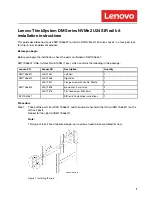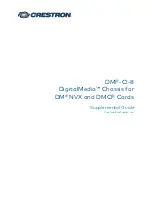
Stinger Operational Overview
What’s next
Stinger® MS+ Getting Started Guide
4-5
get ( system )
hdlc ( system )
[More? <ret>=next entry, <sp>=next page, <^C>=abort]
For details about each command, see the
Stinger Reference
. For more information
about command help, see the
The TAOS Command-Line Interface Guide
.
Verifying software and control module versions
The
version
command displays the version of TAOS that is currently running in the
Stinger unit and also displays the version and type of control module installed.
For example a model E revision 2.1 control module provides the following response
to the
version
command:
admin> version
software version 9.7.0
* * * 9_7_0/stngrcm2 <tststngr> Jun 30 2004 04:09 * * *
Hardware revision: 2.1 Model E
Status windows
The command-line interface supports several status windows that focus on different
aspects of system activity (such as connection status and log messages). The windows
provide a great deal of read-only information about what is currently happening in
the unit. To display a status window, enter the Status command:
admin> status
The system prompt moves to just below the status window. To close the status
window, enter the command again:
admin> status
If the system prompt is not visible below the status window, press Escape to display it.
Note
Stinger configuration settings are stored in onboard flash memory, and must
be backed up to a TFTP host whenever changes are made. For details about backing
up and restoring the Stinger configuration, see the
Stinger Administration Guide
.
What’s next
When you have planned your network, you are ready to configure the Stinger unit.
You can perform configuration tasks in any order you want. Table 4-1 shows where
to look for the information you need.
Table 4-1. Location of configuration information
Configuration task
Location
Establish a serial connection
“Serial connection to a console” on page 5-2
Set up basic access security
“Restricting administrative access” on page 5-7
Configure IP
“Providing a basic system IP configuration” on
page 5-9 and the
Stinger IP2000 Configuration Guide
Configure the unit to use
RADIUS
TAOS RADIUS Guide and Reference













































